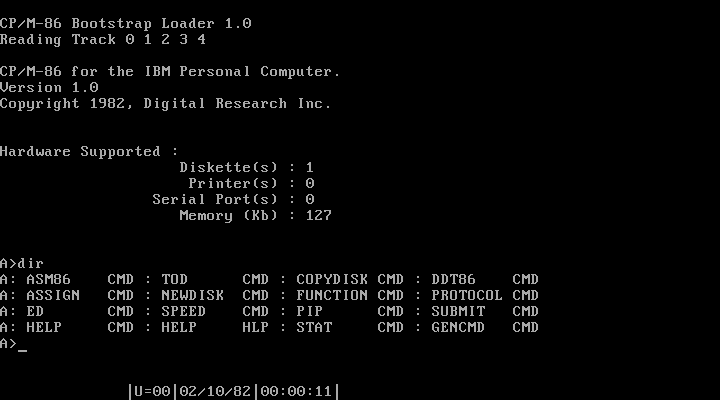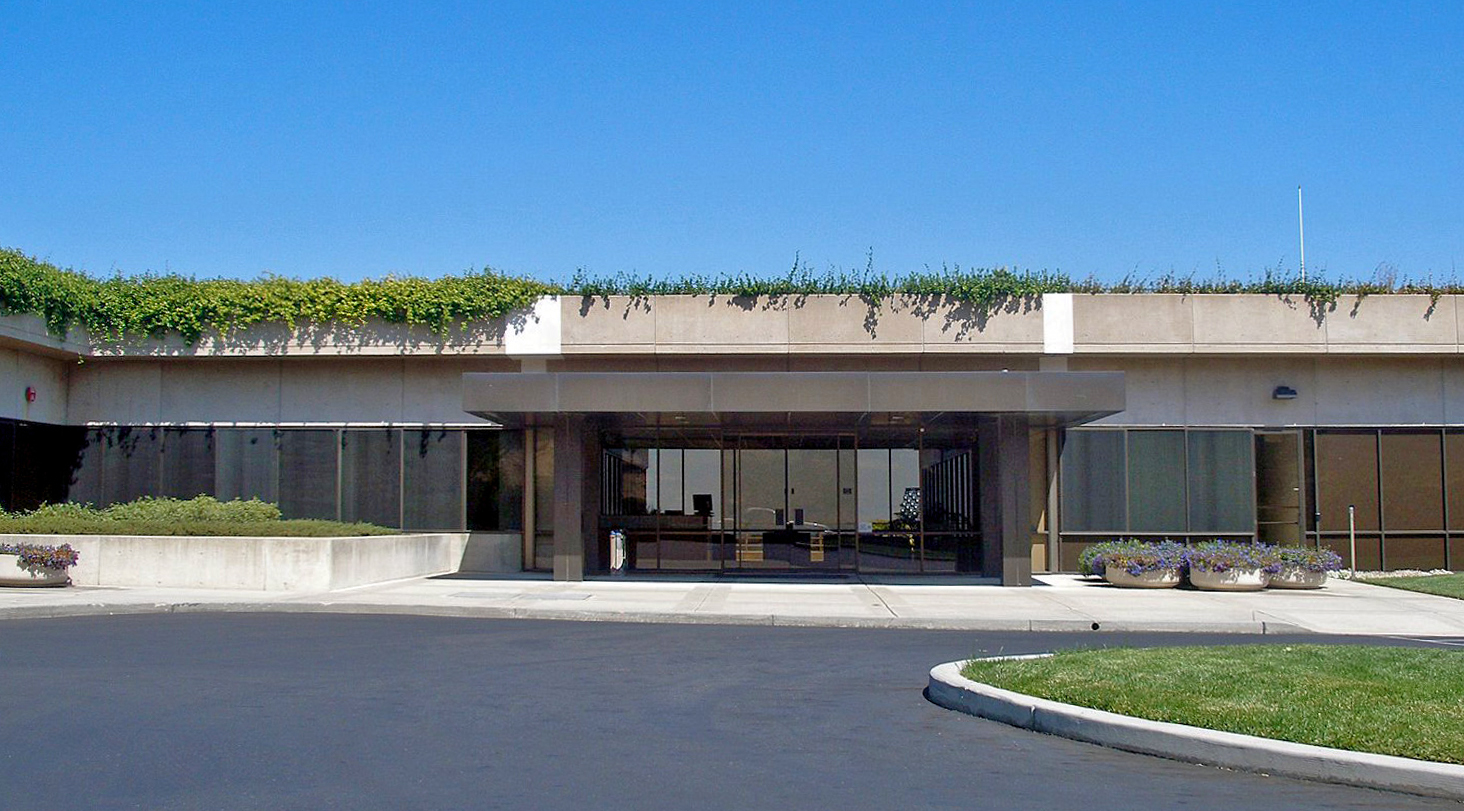|
Application Environment Services
GEM (for Graphics Environment Manager) is a discontinued operating environment released by Digital Research in 1985. GEM is known primarily as the native graphical user interface of the Atari ST series of computers, providing a WIMP (computing), WIMP desktop. It was also available for IBM PC compatibles and shipped with some models from Amstrad. GEM is used as the core for some commercial MS-DOS programs, the most notable being Ventura Publisher. It was ported to other computers that previously lacked graphical interfaces, but never gained traction. The final retail version of GEM was released in 1988. Digital Research later produced X/GEM for their FlexOS real-time operating system with adaptations for OS/2 Presentation Manager and the X Window System under preparation as well. History GSX In late 1984, GEM started life at DRI as an outgrowth of a more general-purpose graphics library known as GSX (Graphics System Extension), written by a team led by Don Heiskell since abou ... [...More Info...] [...Related Items...] OR: [Wikipedia] [Google] [Baidu] |
Digital Research
Digital Research, Inc. (DR or DRI) was a privately held American software company created by Gary Kildall to market and develop his CP/M operating system and related 8-bit, 16-bit and 32-bit systems like MP/M, Concurrent DOS, FlexOS, Multiuser DOS, DOS Plus, DR DOS and Graphics Environment Manager, GEM. It was the first large software company in the microcomputer world. Digital Research was originally based in Pacific Grove, California, later in Monterey, California. History 1974–1979: Founding and incorporation In 1972, Gary Kildall, an instructor at the Naval Postgraduate School in Monterey, California, began working at Intel as a consultant under the business name Microcomputer Applications Associates (MAA). By 1974, he had developed Control Program/Monitor, or CP/M, the first disk operating system for microcomputers. In 1974 he incorporated as Intergalactic Digital Research, with his wife handling the business side of the operation. The company soon began opera ... [...More Info...] [...Related Items...] OR: [Wikipedia] [Google] [Baidu] |
Real-time Operating System
A real-time operating system (RTOS) is an operating system (OS) for real-time computing applications that processes data and events that have critically defined time constraints. A RTOS is distinct from a time-sharing operating system, such as Unix, which manages the sharing of system resources with a scheduler, data buffers, or fixed task prioritization in multitasking or multiprogramming environments. All operations must verifiably complete within given time and resource constraints or else fail safe. Real-time operating systems are event-driven and preemptive, meaning the OS can monitor the relevant priority of competing tasks, and make changes to the task priority. Characteristics A key characteristic of an RTOS is the level of its consistency concerning the amount of time it takes to accept and complete an application's task; the variability is "jitter". A "hard" real-time operating system (hard RTOS) has less jitter than a "soft" real-time operating system (soft RTOS); a l ... [...More Info...] [...Related Items...] OR: [Wikipedia] [Google] [Baidu] |
BDOS
CP/M, originally standing for Control Program/Monitor and later Control Program for Microcomputers, is a mass-market operating system created in 1974 for Intel 8080/Intel 8085, 85-based microcomputers by Gary Kildall of Digital Research, Digital Research, Inc. CP/M is a disk operating system and its purpose is to organize files on a magnetic storage medium, and to load and run programs stored on a disk. Initially confined to single-tasking on 8-bit processors and no more than 64 kilobytes of memory, later versions of CP/M added multi-user variations and were migrated to 16-bit processors. CP/M's core components are the ''Basic Input/Output System'' (BIOS), the ''Basic Disk Operating System'' (BDOS), and the ''Console Command Processor'' (CCP). The BIOS consists of drivers that deal with devices and system hardware. The BDOS implements the file system and provides system services to applications. The CCP is the command-line interpreter and provides some built-in commands. CP ... [...More Info...] [...Related Items...] OR: [Wikipedia] [Google] [Baidu] |
NEC APC-III
The APC (Advanced Personal Computer) was a series of business microcomputers released outside of Japan by the NEC Corporation. The series comprised the APC, the APC II and APC III, international versions of models from the Japanese NEC N5200 series (jp). The 8086-based N5200, released in 1981, was the first computer to use the NEC μPD7220 High-Performance Graphics Display Controller. The better-known PC-9800 series, released a year later by the different division, had a similar architecture to the original N5200 and used many of the same components. The most significant differences between the two were that the PC-9801 had slightly lower vertical screen resolution, graphics were standard instead of optional (still using a second μPD7220) and it used 5.25" floppy drives instead of 8". The APC IV, despite sharing the series name, was an ordinary IBM PC/AT compatible and not compatible with the earlier APC models. N5200 The N5200 is a series of personal computers released in 19 ... [...More Info...] [...Related Items...] OR: [Wikipedia] [Google] [Baidu] |
CP/M-86
CP/M-86 is a discontinued version of the CP/M operating system that Digital Research (DR) made for the Intel 8086 and Intel 8088. The system commands are the same as in CP/M-80. Executable files used the relocatable .CMD file format. Digital Research also produced a multi-user multitasking operating system compatible with CP/M-86, MP/M-86, which later evolved into Concurrent CP/M-86. When an emulator was added to provide PC DOS compatibility, the system was renamed Concurrent DOS, which later became Multiuser DOS, of which REAL/32 is the latest incarnation. The FlexOS, DOS Plus, and DR DOS families of operating systems started as derivations of Concurrent DOS as well. History Digital Research's CP/M-86 was originally announced to be released in November 1979, but was delayed repeatedly. When IBM contacted other companies to obtain components for the IBM PC, the as-yet unreleased CP/M-86 was its first choice for an operating system because CP/M had the most applica ... [...More Info...] [...Related Items...] OR: [Wikipedia] [Google] [Baidu] |
Concurrent CP/M
MP/M (Multi-Programming Monitor Control Program) is a discontinued multi-user version of the CP/M operating system, created by Digital Research Digital Research, Inc. (DR or DRI) was a privately held American software company created by Gary Kildall to market and develop his CP/M operating system and related 8-bit, 16-bit and 32-bit systems like MP/M, Concurrent DOS, FlexOS, Multiuser ... developer Tom Rolander in 1979. It allowed multiple users to connect to a single computer, each using a separate terminal. MP/M was a fairly advanced operating system for its era, at least on microcomputers. It included a priority-scheduled computer multitasking, multitasking kernel (operating system), kernel (before such a name was used, the kernel was referred to as the ''nucleus'') with memory protection, concurrent input/output (XIOS) and support for spooling and queueing. It also allowed for each user to run multiple programs, and switch between them. MP/M platforms MP/M-80 The ... [...More Info...] [...Related Items...] OR: [Wikipedia] [Google] [Baidu] |
16-bit
16-bit microcomputers are microcomputers that use 16-bit microprocessors. A 16-bit register can store 216 different values. The range of integer values that can be stored in 16 bits depends on the integer representation used. With the two most common representations, the range is 0 through 65,535 (216 − 1) for representation as an ( unsigned) binary number, and −32,768 (−1 × 215) through 32,767 (215 − 1) for representation as two's complement. Since 216 is 65,536, a processor with 16-bit memory addresses can directly access 64 KB (65,536 bytes) of byte-addressable memory. If a system uses segmentation with 16-bit segment offsets, more can be accessed. As of 2025, 16-bit microcontrollers cost well under a dollar (similar to close in price legacy 8-bit); the cheapest 16-bit microcontrollers cost less than other types including any 8-bit (and are more powerful, and easier to program generally), making 8-bit legacy microcontrollers not worth it for new applicatio ... [...More Info...] [...Related Items...] OR: [Wikipedia] [Google] [Baidu] |
8-bit
In computer architecture, 8-bit integers or other data units are those that are 8 bits wide (1 octet). Also, 8-bit central processing unit (CPU) and arithmetic logic unit (ALU) architectures are those that are based on registers or data buses of that size. Memory addresses (and thus address buses) for 8-bit CPUs are generally larger than 8-bit, usually 16-bit. 8-bit microcomputers are microcomputers that use 8-bit microprocessors. The term '8-bit' is also applied to the character sets that could be used on computers with 8-bit bytes, the best known being various forms of extended ASCII, including the ISO/IEC 8859 series of national character sets especially Latin 1 for English and Western European languages. The IBM System/360 introduced byte-addressable memory with 8-bit bytes, as opposed to bit-addressable or decimal digit-addressable or word-addressable memory, although its general-purpose registers were 32 bits wide, and addresses were contained in the lower 24 bits ... [...More Info...] [...Related Items...] OR: [Wikipedia] [Google] [Baidu] |
Graphical Kernel System
The Graphical Kernel System (GKS) is a 2D computer graphics system using vector graphics, introduced in 1977. It was suitable for making line and bar charts and similar tasks. A key concept was cross-system portability, based on an underlying coordinate system that could be represented on almost any hardware. GKS is best known as the basis for the graphics in the GEM GUI system used on the Atari ST and as part of Ventura Publisher. A draft international standard was circulated for review in September 1983. Final ratification of the standard was achieved in 1985, making it the first ISO graphics standard. A 3D system modelled on GKS was introduced as PHIGS, which saw some use in the 1980s and early 1990s. Overview GKS provides a set of drawing features for two-dimensional vector graphics suitable for charting and similar duties. The calls are designed to be portable across different programming languages, graphics devices and hardware, so that applications written to use GK ... [...More Info...] [...Related Items...] OR: [Wikipedia] [Google] [Baidu] |
Xerox PARC
Future Concepts division (formerly Palo Alto Research Center, PARC and Xerox PARC) is a research and development company in Palo Alto, California. It was founded in 1969 by Jacob E. "Jack" Goldman, chief scientist of Xerox Corporation, as a division of Xerox, tasked with creating computer technology-related products and hardware systems. Xerox PARC has been foundational to numerous revolutionary computer developments, including laser printing, Ethernet, the modern personal computer, graphical user interface (GUI) and desktop metaphor–paradigm, object-oriented programming, ubiquitous computing, electronic paper, amorphous silicon (a-Si) applications, the computer mouse, and very-large-scale integration (VLSI) for semiconductors. Unlike Xerox's existing research laboratory in Rochester, New York, which focused on refining and expanding the company's copier business, Goldman's "Advanced Scientific & Systems Laboratory" aimed to pioneer new technologies in advanced physics, mate ... [...More Info...] [...Related Items...] OR: [Wikipedia] [Google] [Baidu] |



